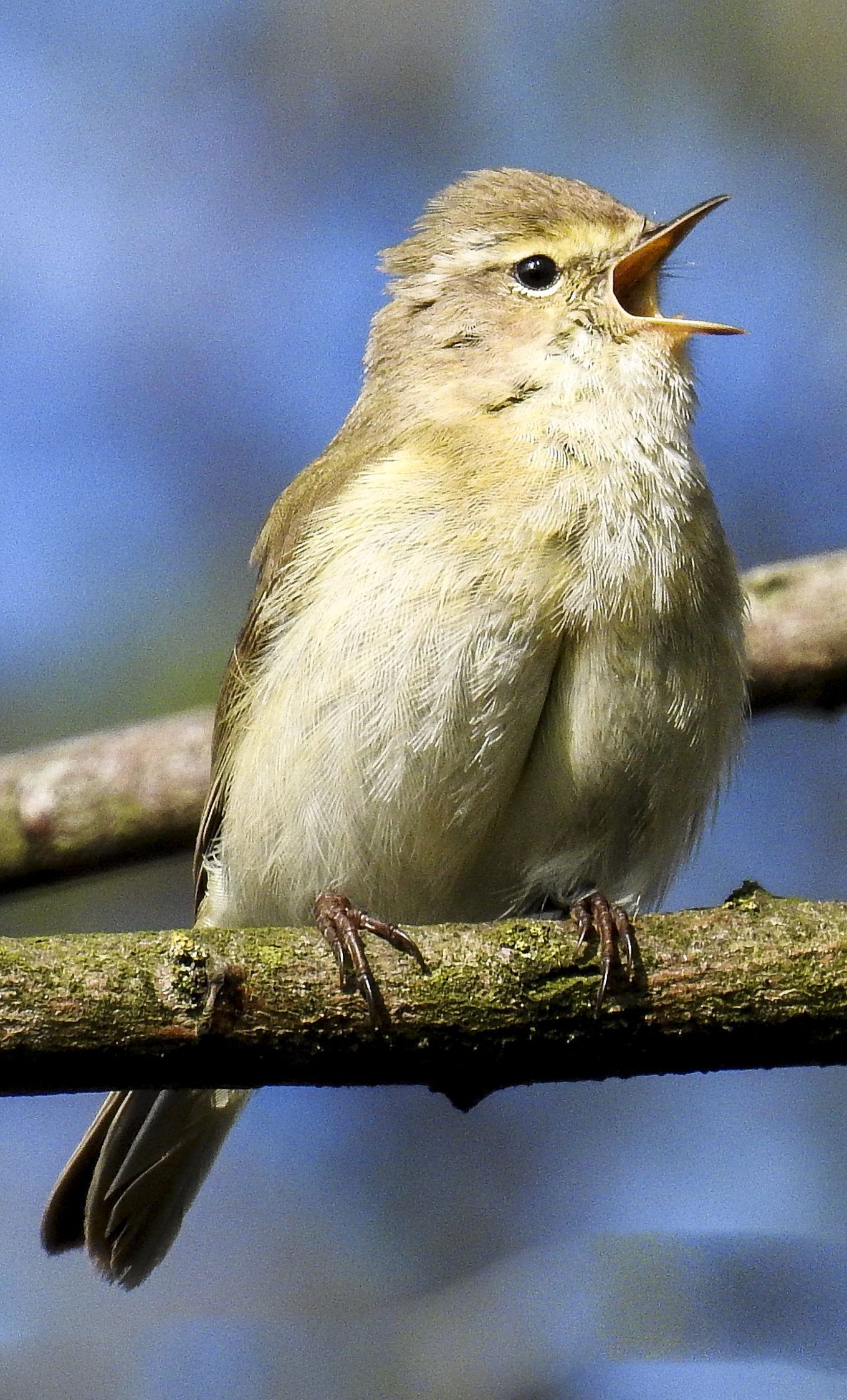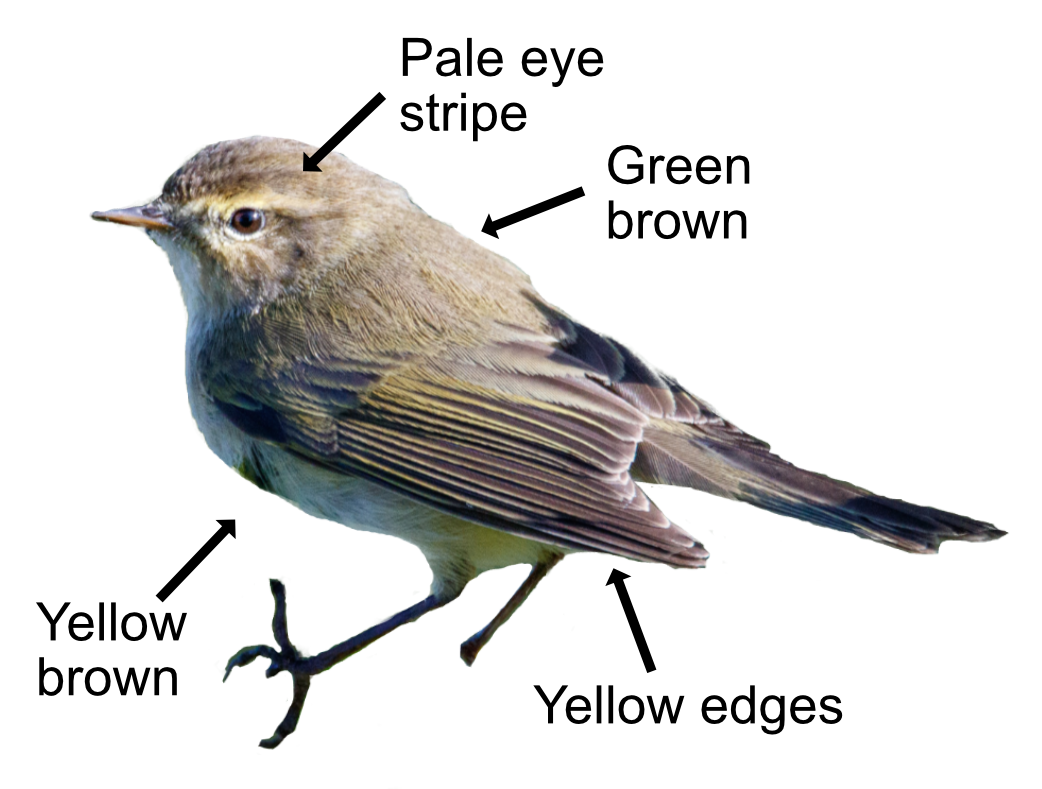
The Chiffchaff is one of the first birds to come back from France and Africa in the spring (though a few stay in southern Britain all winter). They are in a hurry to set up camp and get parade drill underway. They are called 'zilpzalp' in German, 'siff-saff' in Welsh, and 'tjiftjaf' in Dutch, so everyone pretty much calls them by the noise they make.
The Chiffchaff is about the size of a Blue Tit, though not such a snappy dresser, and is a bit podgy, pot-bellied looking. Their upper parts are a dull olive-brown with the rump being slightly paler. The underparts are a dull yellowish-brown (see what I mean - dull as a squaddie). The short, rounded wings are marked with faint yellowish lines. There is a dark line through the eye and a faint pale eye stripe above. Unless you get them in good light, they just look brown (in their fatigues). They are a very restless bird, flicking their wings and twitching their tails especially when feeding - like a soldier constantly saluting. The Chiffchaffs' flight looks jerky. To add to the confusion, they look very similar to a Willow Warbler with their song being the best way to tell them apart.
The Chiffchaff sings like a dyslexic parade ground sergeant major with his "Left, Right!" ("Chiff, Chaff") call, only he gets his feet all mixed up and often goes "Left, right, left, right, right, left, right, left, left, left..." while belting out his marching song.

Chiffchaffs like woods, copses and other shrubby places where there is thick undergrowth and trees, though not pine woods. They feed mainly on insects like midges, aphids and caterpillars. They will flutter out to catch an insect on the wing and sometimes hover to grab one from under a leaf.
The female builds a domed nest with a side entrance (and boot room) low down in the bushes, especially brambles. It is made from stems and leaves, and is lined with feathers. 4-7 eggs are laid in early May, which hatch after 15 days. The youngsters are fed by mum as dad is too busy on parade ground duty. The young cadets leave the nest after 15 days. In places where it is warm, they may have a second brood.
There are about 700,000 Chiffchaffs in Britain. The migrants arrive in late March and leave at the end of September. Most head south to France to join up with their French legionnaire buddies and chat about past campaigns. Some hardy birds stay in the south of England, particularly now winters are getting milder with climate warming. They are mainly concentrated in the south and midlands, getting more scarce in the north and rarer still in Scotland as who wants to sing with bagpipes. Although their marching song is not the greatest of melodies when compared to a Skylark's, it is a joy to hear, as it signals that the year has turned, winter is gone, and spring has arrived.
The Chiffchaffs Latin name is 'phylloscopus collybita' where 'phyllocopus' comes from Greek words meaning 'leaf to look at' (well they are a dull greenish brown) and 'collybita' is a corruption of 'kollubistes' meaning money changer as their song has been likened to the jingling of coins.